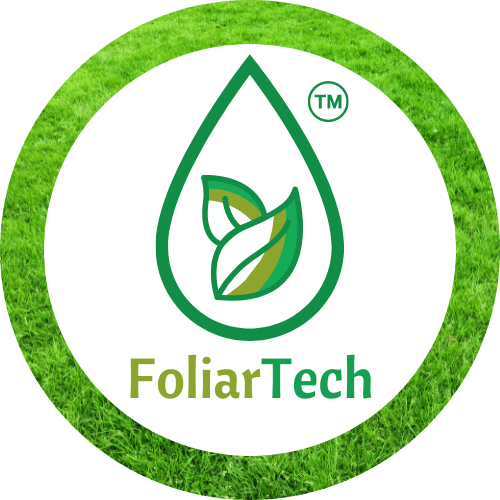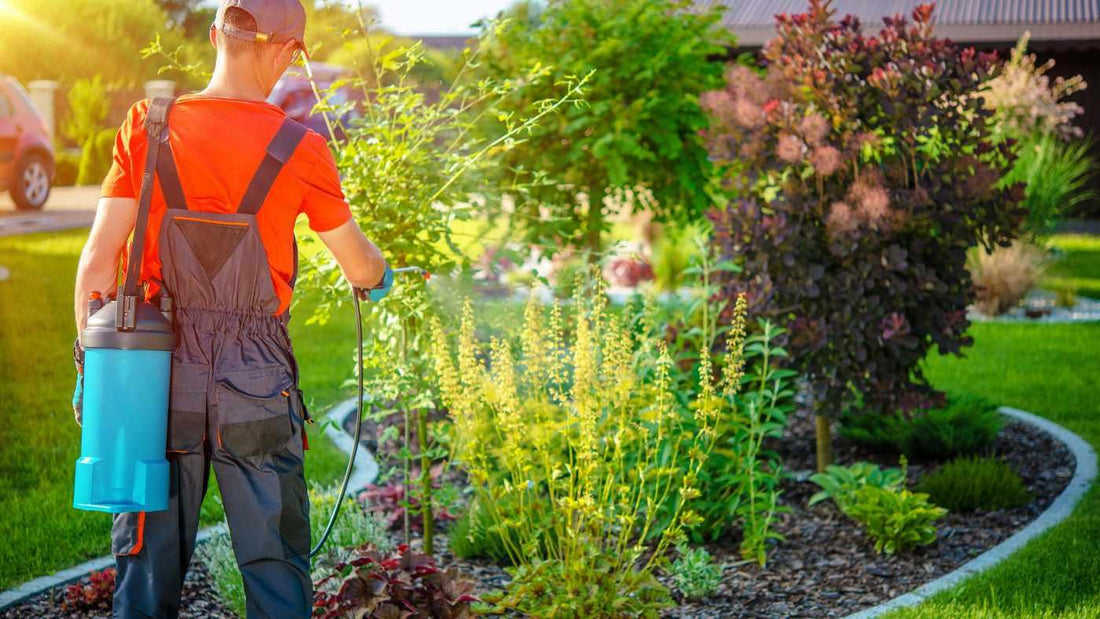I. Introduction
Humic acid liquid is a potent all-natural soil conditioner, which plays a vital role in preserving a balanced soil habitat, ensuring optimal resiliency for plants and gardens. This organic compound, composed of plant and animal matter in various stages of decomposition, is found in soils and sediments. Humic acid liquid has a number of benefits, such as strengthening the soil structure, increasing oxygen to the root zone, and boosting water absorption and nutrient availability. It can also enhance roots, reduce soil erosion and compaction, and stimulate beneficial microbial life. This article covers the benefits of liquid humic acid, sources, safety considerations, and application techniques.
We've made a video on this topic with a few extra valuable nuggets of information not mentioned in this article, so be sure to check that out here.
II. Overview
A. What Is Humic Acid?
Humic acid is an organic material that originates from the breakdown of plant and animal matter over time. This compound typically consists of a variety of elements, such as lignin, humins, humic acids, fulvic acids, and more. It can be found in many different places in nature all around the world, including soils, rivers, marshes, and oceans.
B. What is the Purpose of Humic Acid Liquid?
When mixed with fertilizer, a humic acid liquid supplement can help deliver the necessary nutrients deep into the soil so that they are easily absorbed by the root systems of indoor or outdoor plants, vegetables, fruits, turf, grasses, agricultural crops and even cannabis. Additionally, this substance has been known to aid in the prevention of erosion and improve nutrient absorption rates from fertilizers. Finally, it can even promote better aeration and drainage of soils thanks to its ability to bind together both clay particles and organic matter.
C. What are the Benefits of Using Humic Acid Liquid?
Humic acid is an incredibly versatile and beneficial substance for use in soil. Not only does it provide essential nutrients like nitrogen, phosphorus, and potassium to help improve fertility, but it also helps to improve soil structure and increase microbial activity. In addition, humic acid can be used to reduce plant stress and nutrient leaching while increasing water-holding capacity. This makes it a fantastic tool for ensuring healthy growth in plants. If that wasn't enough, as few other benefits are below:
- Fight off disease and defend against environmental stress such as heat, drought and poor conditions
- Maximize the amount of nutrients your plants can uptake through the root zone and foliar applications
- Loosen compacted soil, works as an aerator by increasing oxygen to the root zone
- Reduces the need for frequent fertilization and reduce fertilizer waste, therefore benefiting the environment
- Increase water uptake by your root zone and lower watering intervals
- Fulvic acid will increase absorption as it's a smaller molecule than humic acid alone
These benefits make humic acid liquid an ideal choice for improving soil health and fertility.
II. Types of Liquid Humic Acid
A. What is the Composition of Humic Acid Liquid?
It is made from a blend of humic and fulvic acids derived from organic matter. These two acids contain a wide range of beneficial nutrients such as carbon, nitrogen, potassium and other essential trace elements. Fulvic acid is a smaller molecule, so it is able to penetrate and help move nutrients into the cell walls quicker and more efficiently. Humic acid, on the other hand, is larger, so it helps to bind minerals together and release them slowly into the soil.
B. Whats the best source of Liquid Humic Acid?
Humic acid can be derived from two naturally occurring sources: Humalite and Leonardite.
The common problem with liquid humic acid made from leonardite, is it will clog your sprayers frequently as it is made from ash, forming clumps, and not mix very well. You'll find yourself frustrated when trying to apply it as it will clog your sprayer frequently.
This is where Humalite really shines, it's the purest form of humic acid available on earth. It's fully water soluble and mixes instantly with water or any fertilizer. Fulvic acid will increase absorption as it's a smaller molecule than Humic acid alone.
C. Is Liquid or Granular Humic Acid Better?
Humic acid is available in liquid and granular forms with liquid being easier to apply and more readily absorbed by the soil. Granular humic acid is more concentrated and is more suitable for use with slow-release fertilizers. The packaging also varies, as granular is significantly heavier and more challenging to handle.
We prefer liquid over granular because it offers uniform distribution, so all areas get the same amount of product, and it is absorbed much quicker since it only takes 3-6 hours for the liquid to go through the soil to the root zone as opposed to days for granular to break down. Plus, the liquid is absorbed almost immediately via the leaves and goes straight to the root zone, making the results rapid fast.
D. How Long Does it Take for Humic Acid Liquid to Take Effect?
Humic acid liquid has a wide range of benefits for the soil, plants and other organisms, and can often start providing results even within a few hours to days after it has been applied. Depending on the type and concentration of the product being used, its effectiveness may vary. However, it's important to note that while granular humic acid liquids may take a few weeks to start having an effect, the liquid formulation is usually much faster-acting.
IV. Our Favorite Liquid Humic Acid Product
A: Humic ELITE PG ™
HUMIC ELITE PG™ is made with 100% Humalite from Alberta, Canada and is widely regarded as the best source of humic acid available on earth. Being an organically certified product through the OMRI (Organic Materials Revue Institute), This product is meant for the recreational, professional and commercial growers, to maximize yields across all spectrums of growing mediums used in lawn, flower, plant, trees, vegetable, cannabis and crop production.
We love it because it mixes instantly with any water or fertilizer and will not clog up screens, filters sprayer set-ups, or hydroponics. It cannot be over-applied (unlike granular form), and increasing the application rates will not cause harm. If you want to give it a try in your own garden, you can grab yours here.
V. Safety Considerations
A. Are There Any Risks Associated With Using Humic Acid Liquid?
Humic acid liquid is generally considered a safe and non-toxic product when sourced from an organic source. While we don't recommend showering in it or spraying it all over your meal, several companies actually supply humic acid liquid products that are marketed as health supplements. Don't drink any product that has not been explicitly labelled as safe to consume. With that said, it seems any living organism can benefit significantly from the boost that humic acid liquid can provide.
B. Is Humic Acid Liquid Safe to Handle?
Yes, humic acid liquid is safe to handle. It is non-toxic and non-corrosive, meaning it won’t cause any irritation to your skin or damage to any surfaces. However, it can be a good idea to wear gloves when handling humic acid liquid, just to be on the safe side.
VI. Mixing Ratios
A. How is Humic Acid Liquid Prepared?
Its quite easy, you simply mix it with water based on the ratios shown on the label. You can mix it with your favorite fertilizer and water. The ratios will vary vary depending on your application method, whether that is irrigation, foliar spray, top dressing, or soil aeration. It is necessary to read the instructions on the label to determine the correct ratio. After you have mixed the fertilizer with water, you can either hook it up to your garden hose and spray it, or pour it manually into a hand pump.
B. How much Humic Acid Per Litre of Water?
The amount of humic acid per litre of water will vary depending on the product being used and the intended application. Generally, it is recommended to use 2-4 teaspoons of humic acid liquid per litre of water. However, it is important to read the product label carefully to determine the best rate of application for your particular needs.
C. Can You Mix Humic Acid With Fertilizer?
Absolutely, you can blend humic acid with fertilizer. Humic acid is an impressive soil enhancer and when blended effectively with fertilizer, encourages healthy plant growth through improved nutrient absorption. However, it's critical to incorporate the two in suitable proportions - this way neither the humic acid nor the fertilizer goes to waste.
D. What is the Ideal pH Level for Using Humic Acid Liquid?
To get the most out of your humic acid liquid, you need to find a pH level that is ideal for its application. Generally, optimal results are seen when this number lies between 6.0 and 8.0; if it's too high (over 8) or too low (below 6), it will likely have an adverse effect on its performance.
VII. Application
A. How to Use Humic Acid Liquid
Combining humic acid liquid with other essential plant nutrients such as slow-release fertilizers maximizes the effectiveness of this organic growth booster. You can apply it directly to the soil or mix it into a foliar spray depending on your desired outcome. For optimum results, make sure that you evenly spread the product when applying it directly to guarantee uniform coverage throughout your garden.
B. How Much Humic Acid Liquid Should be Applied Per Square Foot of Soil?
The amount of humic acid liquid to be used per 1000 square foot of soil and is dependent upon your applications and soil conditions. Typically, it's suggested you use 6-13ml per Litre of water applied. Generally for a good soak and penetration into your soil, you would use approximately 22-44 litres of water in the 1000 sqft mentioned.If there has been precipitation/ rain, recently then you can use the lower amount of litres suggested as the ground will have some moisture and will be able to absorb your application easier then if it is dried out.
If you are using Humic Elite PG: it can be applied every 3-4 feedings or waterings.
D. How Often Should I Apply Humic Acid Liquid?
Applying humic acid liquid is best done regularly to achieve the desired results. It's also dependent on the condition of your soil. If your soil is relatively healthy, It can be applied every 3-4 waterings/feedings or more frequently if your soil is devoid of nutrients, dry, and in poor condition. Be sure to monitor your soil and plants regularly so you can adjust the frequency of your application.
IX. Conclusion
Humic acid liquid can be a great way to enhance the fertility of your soil and make it more healthy. This product is so user-friendly that both experienced farmers and newcomers will find it easy to utilize. With proper application, humic acid has the potential to provide numerous advantages for your soil health, ensuring long-term productivity in abundance!
Get the most out of your lawn or garden by utilizing liquid humic acid - purchase our top-rated product here. Be sure to stay informed with helpful gardening tips and tricks via subscribing to our blog here, plus watch a valuable video tutorial that has been created just for you - click on the link now!

